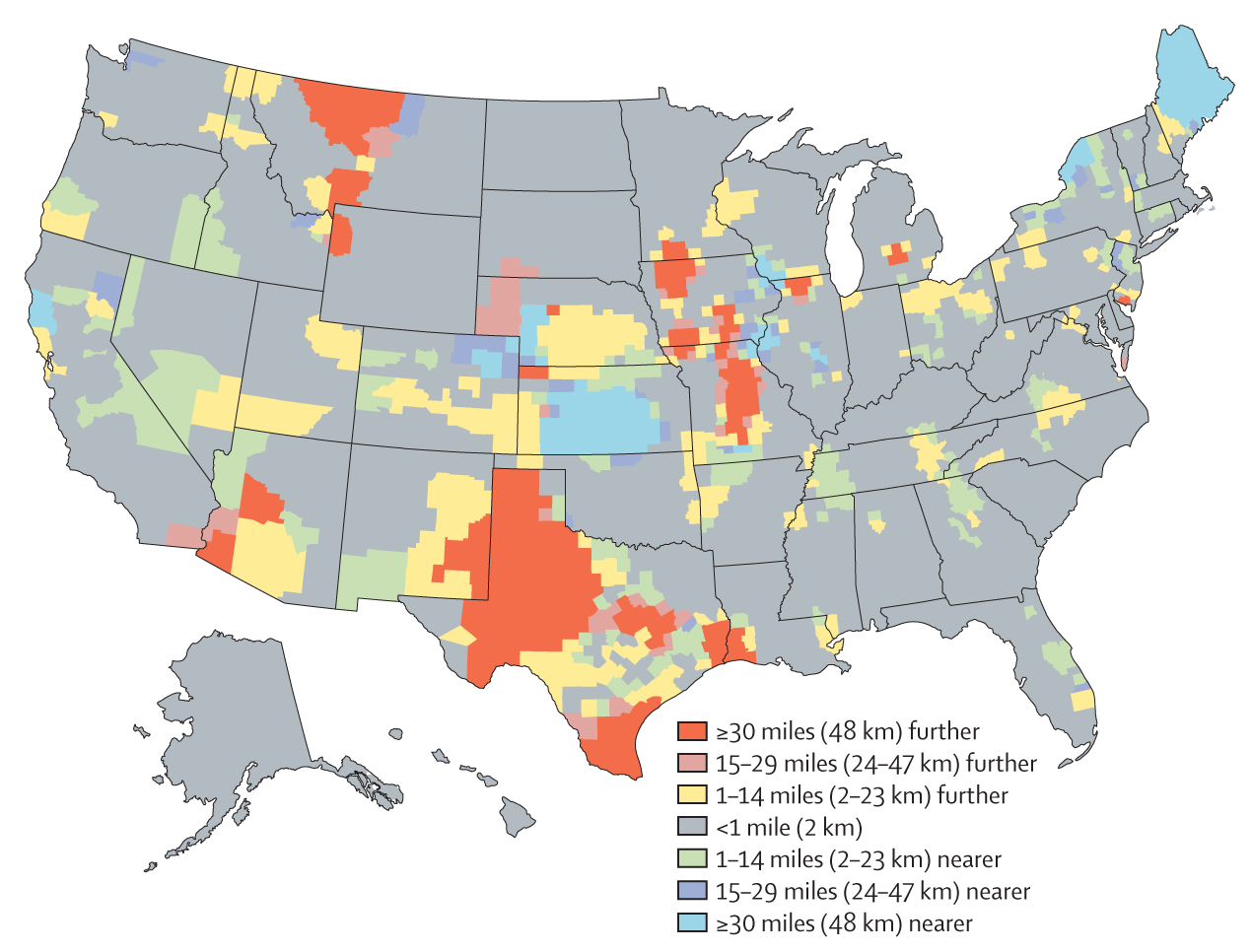Accessibility to abortions in America depends a lot on where you live. The median distance an American woman of reproductive age has to travel to reach a major abortion provider is less than 11 miles, according to a new study. At the same time, one in five American women must travel a median of 42 miles or more. Those living near America’s big cities tend to live within about 15 miles of either a Planned Parenthood of any size, or another clinic that performs 400 or more abortions a year (a metric used to identify larger facilities that publicly state they provide abortions). Down a major swath of rural counties in the middle of the country, however, the average woman would have to drive more than 180 miles.
“There are women who, based on their zip code, have differential access,” says Jonathan Bearak, a sociologist with the Guttmacher Institute who led the study. “That is not fair that they face these obstacles.”
Bearak and his team analyzed data from the Guttmacher Institute’s Abortion Provider Census from the years 2000, 2011, and 2014. Then they used census data to figure out where girls and women aged 15 to 44 live, and calculated how far those folks would have to drive to visit one of the country’s major abortion providers, which altogether performed 95 percent of the abortions in America in 2014, the latest data the Guttmacher scientists had available. The Guttmacher Institute is a non-profit that studies and advocates for easy access to contraception; the distance-mapping effort was funded by an anonymous donation to the institute, and published in the journal The Lancet Public Health.
A map of the team’s 2014 data shows the discrepancy in distance to abortion clinics for women in different counties:
In addition, the researchers compared their 2000 and 2014 data to see whether these distances had changed over the years. In most places, they hadn’t. In a handful of regions, however, they had gotten much better. And in parts of Montana, Iowa, Missouri, and Texas, they had gotten much worse:

(Map: The Lancet Public Health)
Access to medical treatment in general is a problem in rural America, but Montana, Missouri, and Texas show that the controversy over abortion can make things worse. Those three states all passed additional anti-abortion laws sometime between 2000 and 2014. Most notable was Texas, where 2013 House Bill 2 forced numerous clinics to close. In 2016, the Supreme Court overturned the Texan laws, arguing they amounted to an “undue burden” on Americans’ constitutional right to seek an abortion. Research has also shown that Texas’ laws wouldn’t have made abortions safer.
Iowa, meanwhile, is a special case. One recent study suggests that it was easier for Iowans to access abortions during the Guttmacher scientists’ study period because the state allowed clinicians to prescribe medical abortion pills over video chat. The state also made contraception easier to get in other ways. As a result, even as abortion clinics closed and left Iowans farther away from the nearest provider, both the number of, and demand for, abortions in Iowa declined.
Distance is just one possible barrier that Americans face in trying to get abortions. Bearak notes that others include cost, stigma, clinics that are overloaded by demand, and laws that mandate waiting periods—which might force a woman to make several trips to a distant facility. But research shows that distance alone is indeed important. Most recently, research in Texas showed that there were 54,000 abortions there in 2014—while the House Bill 2 provisions were in place—compared to 66,000 in 2012. Texan women told researchers that the anti-abortion laws forced them to get abortions a week later than they would have otherwise, or not to get an abortion at all. Later abortions can be riskier than earlier ones, and more expensive. Women also reported that the then-new laws had made them spend more money than they would otherwise have done, traveling and staying overnight in another city. Nearly half of people who get abortions live below the federal poverty line, so they might find these costs especially burdensome.
“There are barriers across the country that are unnecessary and there are disparities that exist across the country that are unnecessary,” Bearak says. “There are legislative barriers that are unnecessary, with no basis in health, science, or safety.”





